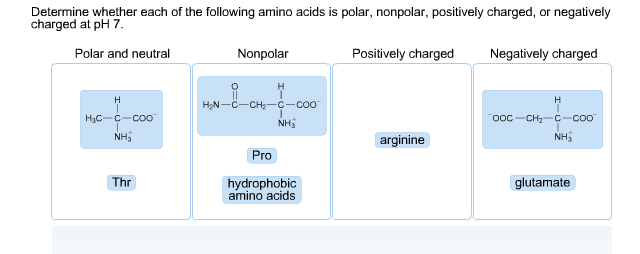

We integrate computational methods to analyze, rather than to predict, the peptide assembly mechanism atomic-resolution simulations are used to probe the free energy of association and probability of amino acid contact during co-assembly. Here, we introduce the CoOP strategy and explore the effects of alanine (A), tryptophan (W), and isoleucine (I) (we will use the standard single-letter amino acid codes throughout) in this framework.

As a result, there is a need for an approach that can bridge the combinatorial explosion of amino acid sequence space with the benefits of editing known sequences to map and search new peptides for new functionalities. Additional co-assembly strategies are beneficial as they can provide wider optimization of nanomaterials for various applications, but such approaches risk expanding the already vast design space ( 1, 16).
POSITIVELY CHARGED AMINO ACIDS FULL
Screening all possible amino acids to create a wider range of properties, on the other hand, may encounter vast design spaces even for small peptides and is therefore impractical for full experimental exploration.


Studies based on editing the peptide sequences of natural designs typically have an initial focus on a particular type of interactions for the property of interest, which may restrict the achievable materials properties ( 15). Understanding the effects of these small changes is essential to identify the structure-property relation and create small peptides that do not simply mimic natural sequences but instead are rationally designed for the desired properties. The organization of peptide assemblies emerges from small changes in the amino acid sequence that provides noncovalent interactions, such as electrostatic forces, hydrogen bonds, hydrophobic effects, and aromatic stacking ( 13, 14). In particular, self-assembly into fibrillar peptide aggregates is abundant in nature and various synthetic technologies in biomedical research ( 2– 9) and materials science ( 10– 12). Self-assembling small peptides are attractive building blocks because they are relatively easy to synthesize and enable systematic study using experimental and computational analyses to associate peptide sequence (structure) with its properties and functionality, making them promising candidates to fabricate functional nanomaterials ( 1). CoOP represents a unique, simple, and elegant framework that can be used to identify the structure-property relationships of self-assembling peptide-based materials. Our results indicated that the opposite charges initiate the assembly, and the subsequent stability is enhanced by the presence of an undisturbed hydrophobic core. We introduce CoOP with three examples: dialanine, ditryptophan, and diisoleucine. We used an integrated computational and experimental approach, probed the free energy of association and probability of amino acid contacts during co-assembly with atomic-resolution simulations, and correlated them to the physical properties of the aggregates. Rather than attempting a brute-force approach, we instead identify a previously unexplored strategy for discovery and study of intermolecular interactions: “co-assembly of oppositely charged peptide” (CoOP), a framework that “encourages” peptide assembly by mixing two oppositely charged hexapeptides. Discovery of peptide domains with unique intermolecular interactions is essential for engineering peptide-based materials.


 0 kommentar(er)
0 kommentar(er)
